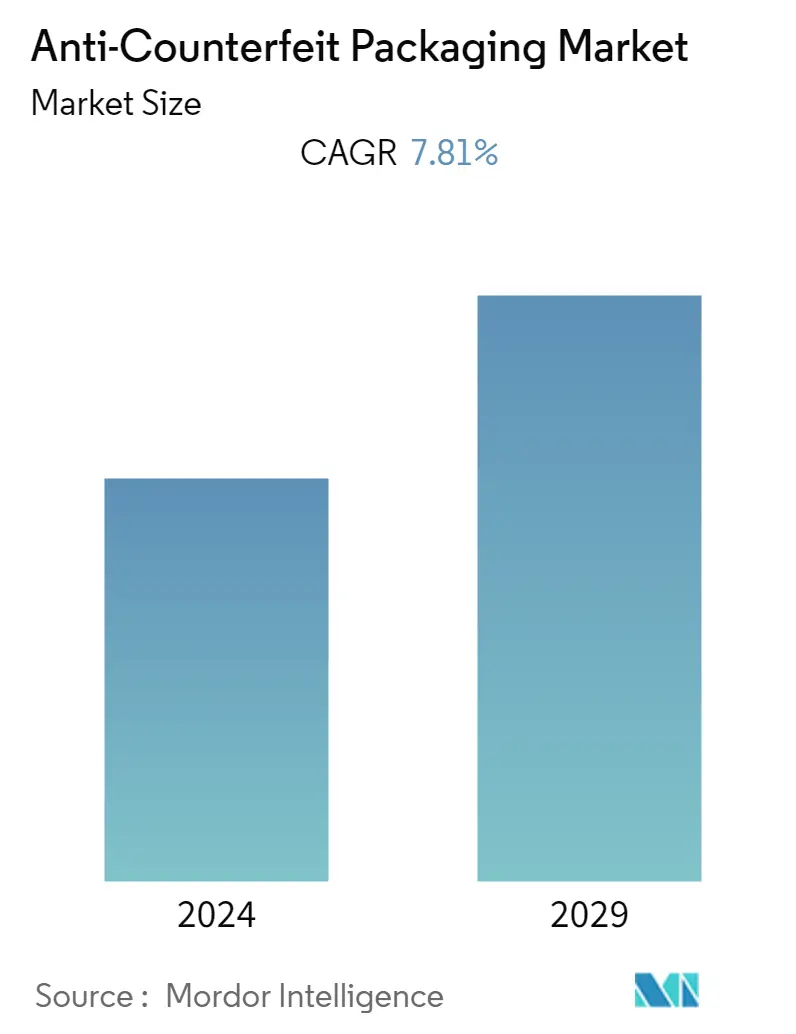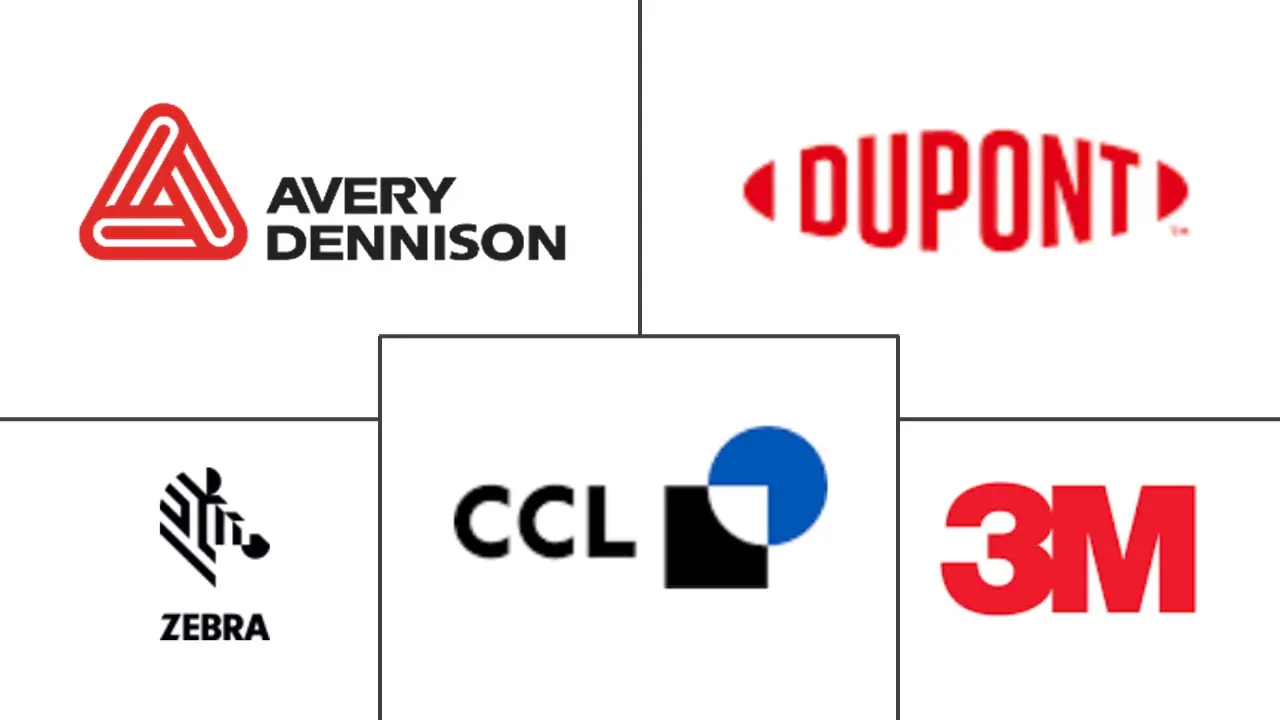Market Size of Anti-Counterfeit Packaging Industry

| Study Period | 2019 - 2029 |
| Base Year For Estimation | 2023 |
| CAGR | 7.81 % |
| Fastest Growing Market | Asia Pacific |
| Largest Market | North America |
| Market Concentration | Medium |
Major Players
*Disclaimer: Major Players sorted in no particular order |
Need a report that reflects how COVID-19 has impacted this market and its growth?
Anti-Counterfeit Packaging Market Analysis
The anti-counterfeit packaging market is projected to register a CAGR of 7.81% during the forecast period (2022-2027). The evolving regulatory landscape for the protection of authenticity of life-critical products, technological advancements in improving anti-theft measures, increasing diversity in the ongoing threats, and the need for brand protection have been instrumental in fueling the growth of the anti-counterfeit packaging market.
- The introduction of regulations, such as the Anti-counterfeiting Trade Agreement by the United States and the labeling and serialization measures by the EU Commission, is expected to positively impact the market in the developed economies over the forecast period.
- In May 2022, according to the Hindu, HP India seized INR 40 crore worth 4,98,000 counterfeit products between July 2020 and September 2021 under its Anti-Counterfeiting and Fraud (ACF) Programme in the country, which is an indicator of a severe threat to the consumer's health in India and worldwide. The developing economies, also known to be the major importers of drugs, are the most affected regions due to this trade.
- Countries such as China, India, South Korea, Brazil, and Turkey, have introduced procedures designed to tighten the pharmaceutical industry's supply chain security. Silicon dioxide-based tags are being used as it is affirmed by the US Food and Drug Administration as generally recognized as safe (GRAS) and considered fit for human consumption.
- However, High setup and innovation costs are required to manufacture anti-counterfeit packaging, discouraging new entrants and potential clients from accepting anti-counterfeit solutions and slowing market growth. Furthermore, some existing technologies, such as barcodes and QR codes, are easy to replicate without proper customer awareness, limiting market growth.
- The coronavirus pandemic spread significantly impacted the supply chain of packaging companies, resulting in a shortage of raw materials such as plastics and labeling papers. In addition, a slight decrease in demand for FMCG products was observed in the first quarter of 2020 as people feared Covid contraction by touching the packaging products. However, packaging companies and authentication technology providers concentrated on developing solutions to effectively communicate the benefits of anti-counterfeit packaging in addressing the impact of Covid-19 and ensuring the safety and quality of their packaging materials while keeping an eye on employee health and well-being.
